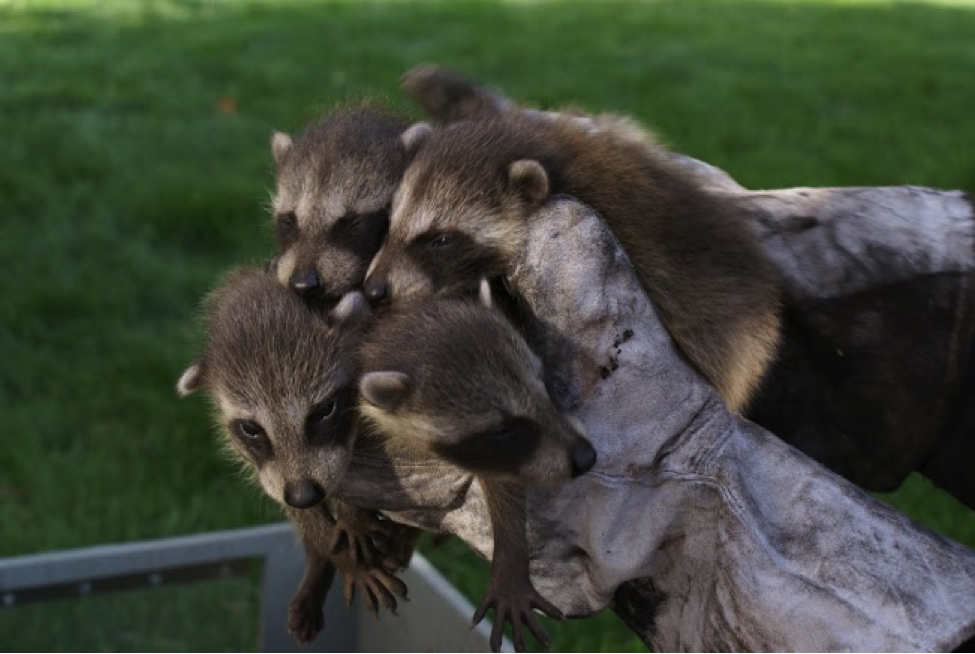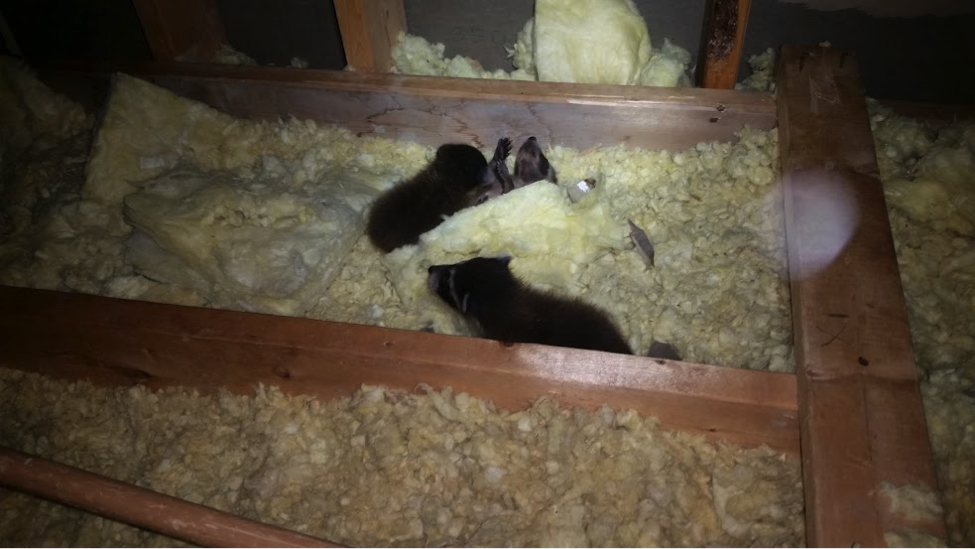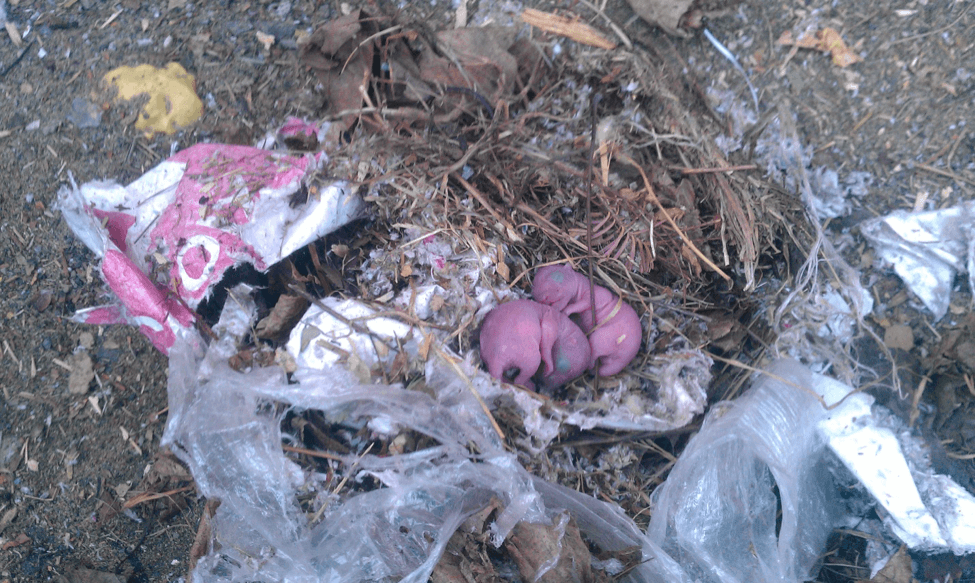A mid-winter thaw or spell of relatively mild temperatures in the midst of a frigid winter is usually a welcome sight on any Canadian weather forecast. Most years you can usually count on a warm stretch around the end of January where temperatures seem to remind you that spring isn’t too far off in the distance.
Like the Indian Summer in October, the mid-winter thaw is a known among meteorologists as a singularity. That is a weather event that is an anomalous departure from the average in a majority of years (but not all years), at about the same time on a calendar.

Baby raccoons removed from a chimney before being reunited with their mother.
Just like humans, wildlife activity tends to slow down during winter. Raccoons, squirrels and skunks spend much more time hunkered down in their dens and nests when the weather is particularly cold. So it should come as no surprise that a period of warm weather would be welcomed by urban wildlife. It gives them a chance to shake off the cobwebs, forage for food and even socialize with one another.
Spring Means Babies
Most urban wildlife species give birth to offspring beginning in spring and a January thaw presents mating pairs with their first opportunity of the year to get together. It’s during this period that the phones here at Skedaddle Humane Wildlife Control begin to ring with homeowners reporting that animals are “fighting” in their attic.
That’s not fighting they’re hearing up there and the noises are about to get a whole lot worse. In the case of female raccoons pregnancy lasts for a period of 63 days which means homeowners can expect babies in their attic by late March. Raccoon litters can range in size from 1 to 7 babies and as they grow up they can cause plenty of damage and sleepless nights for homeowners.
For wildlife control professionals the spring birthing season marks the busiest time of year as mother raccoons, squirrels, skunks and birds look for secure den sites to have and raise babies. If they decide on your attic, chimney or vents it could end up costing you thousands of dollars in property damage.

Baby raccoons mean damaged insulation.
Once a litter of babies enters the picture the removal process becomes significantly more difficult, it takes for time and often costs more money. To avoid the complications that a litter of immobile babies can present, it’s best to remove unwanted wildlife visitors from your home before the birthing season.
If you suspect that your attic, chimney or porch is home to unwanted critters then now is the time to act. Take advantage of this warm weather to get and have a look around your property for wildlife entry and damage. Act now to prevent your house from becoming the neighbourhood maternity ward.

Baby squirrels are born hairless with their eyes closed.
Skedaddle Humane Wildlife Control has been removing and excluding wildlife from homes since 1989. Our proven methods are both effective and animal safe so call us today to learn more about how we can humanely remove wildlife families from your home – 888.592.0387.
Just the Facts
Raccoons
- Typically one litter per year
- Gestation: 63 days
- Litters contain between 1 and 7 babies, 4 is typical
- Most babies are born in March, April and May
- Babies are immobile for the first 6-8 weeks after birth
Squirrels
- Females give birth to two litters per year, spring and late summer
- Gestation: 44 days
- Litters could contain as many 8 babies but 3 or 4 is typical
- Babies leave the nest until after 12 weeks


